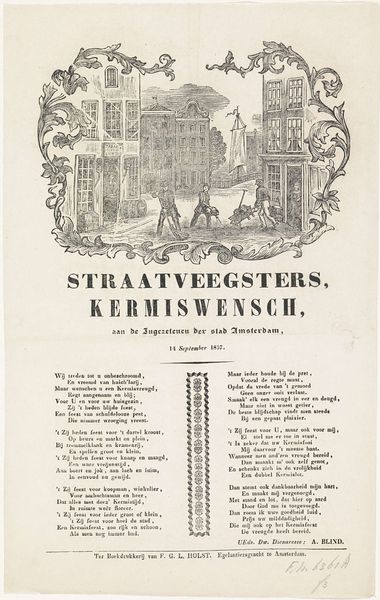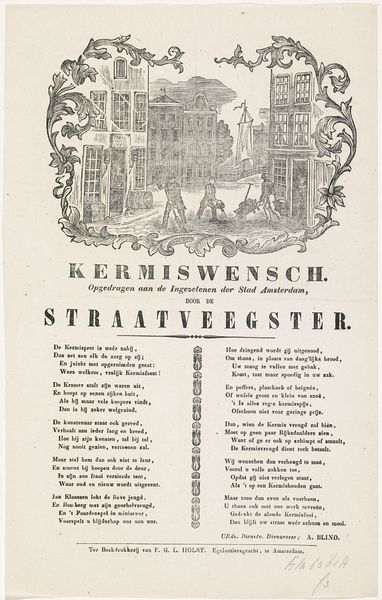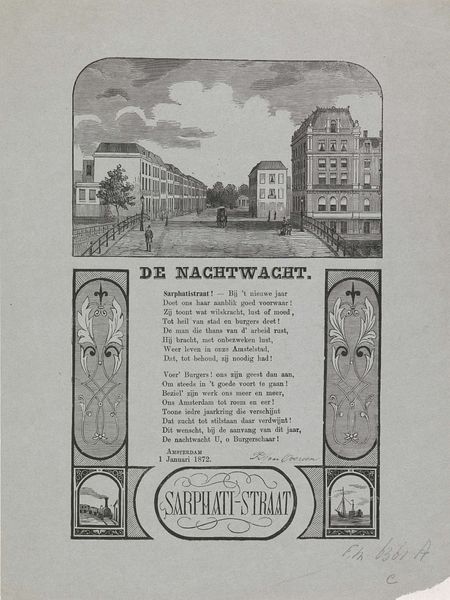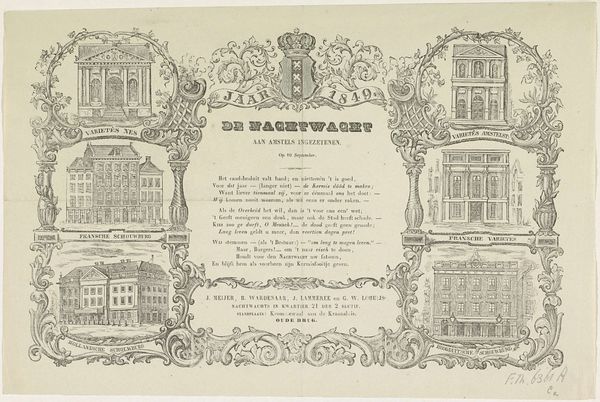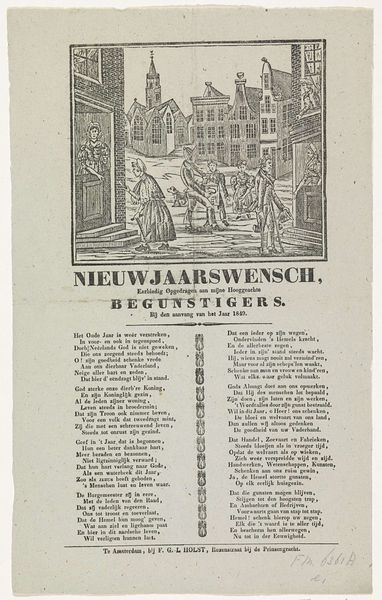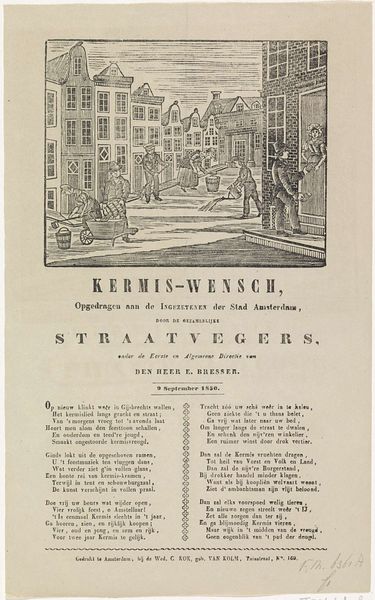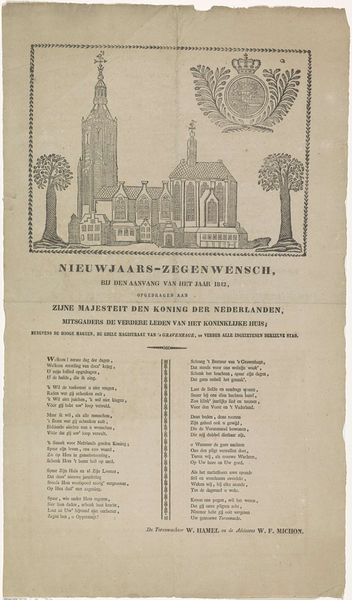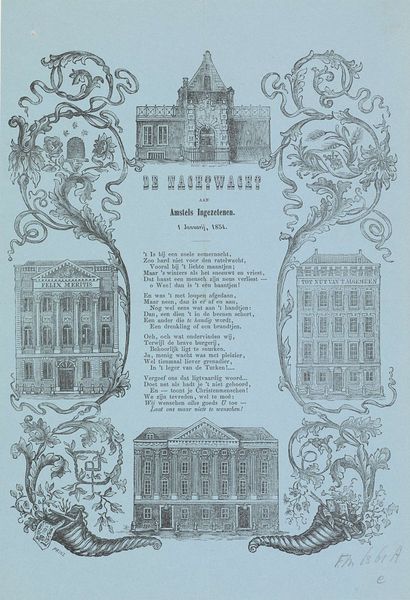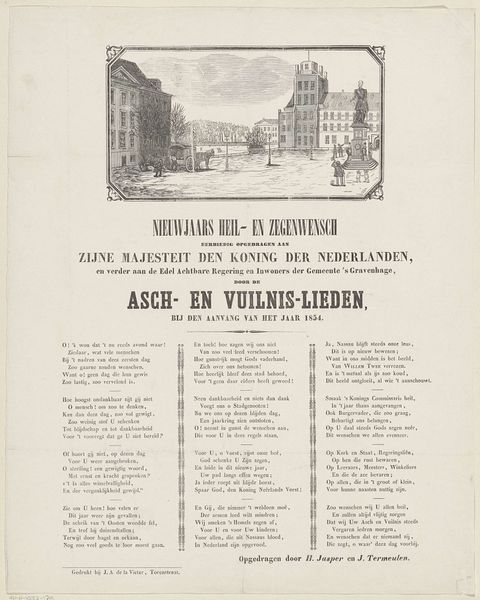
graphic-art, print, etching, poster, engraving
#
graphic-art
#
dutch-golden-age
# print
#
etching
#
old engraving style
#
cityscape
#
genre-painting
#
poster
#
engraving
Dimensions: height 341 mm, width 206 mm
Copyright: Rijks Museum: Open Domain
Editor: We're looking at "Nieuwjaarswens van de Amsterdamse straatveegsters, 1857," a print – both etching and engraving, I think – created around 1856 or 1857. The Rijksmuseum attributes it to an anonymous artist. It has a fascinating, almost promotional feel. What historical context helps us understand it? Curator: Indeed. It’s crucial to see this through the lens of 19th-century urban development and social reform. Consider the rising importance of sanitation in rapidly growing cities like Amsterdam. The print celebrates the street sweepers but also reinforces ideas about social order. How do you think it does that? Editor: Well, the detailed depiction of street sweepers suggests respect for their labor, but the ornamental frame and poetic text also elevate the everyday into something almost ceremonial, a duty or civic ritual. Curator: Precisely. Think about who this “Nieuwjaarswens” was aimed at. "Opgedragen aan de ingezetenen der Stad Amsterdam." "Dedicated to the citizens of the City of Amsterdam." This wasn't just a simple New Year's card. It’s a visual and textual argument for maintaining social harmony through recognizing—and, perhaps, subtly controlling—labor. What's the impact of linking this labor to the New Year? Editor: That makes sense! Presenting this hard work as part of a hopeful new beginning subtly encourages the public to cooperate and contribute to the city’s cleanliness and, therefore, its well-being. Curator: Exactly. The seemingly simple image of street sweepers becomes a complex negotiation of social roles, expectations, and the emerging ideals of a modern, ordered city. It uses genre-painting tropes in a promotional setting. A fascinating confluence. Editor: I didn't expect this print to be so multifaceted. It’s fascinating how an image designed to simply send New Year wishes can also teach us about the era’s views on social hierarchy and the dignity of work. Curator: Absolutely! It underscores the value of looking beyond the surface to unpack the complex cultural meanings embedded within even the most unassuming artworks.
Comments
No comments
Be the first to comment and join the conversation on the ultimate creative platform.
